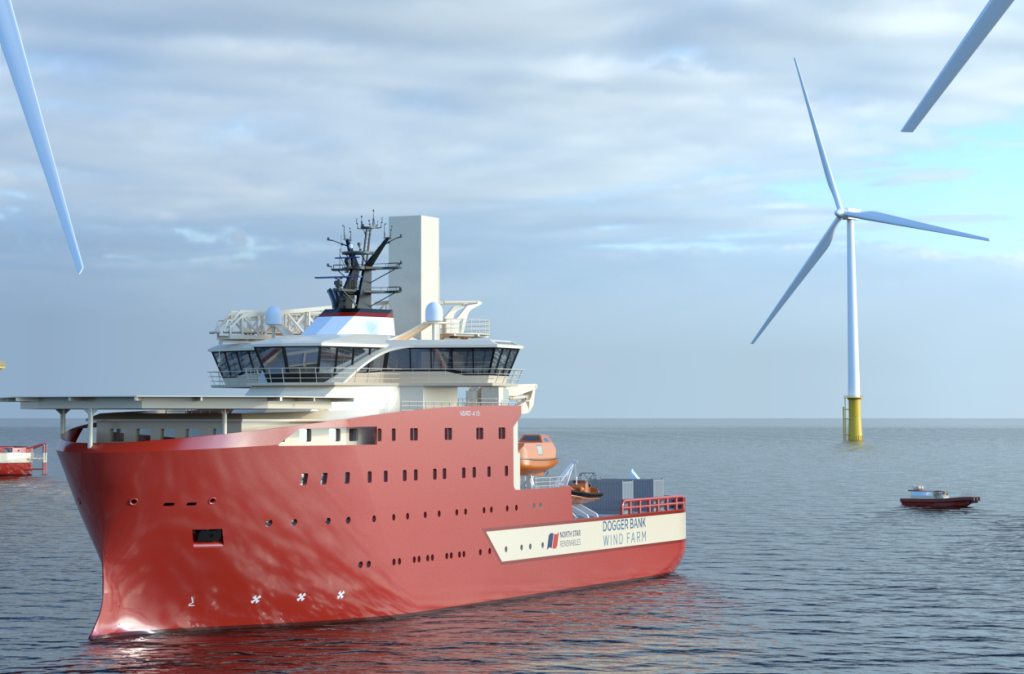With long term charter contracts, single port operations and fixed time at sea Service Operation Vessels (SOV) are ideally suited for powering by liquid hydrogen. There is little available space so installing liquid tanks below will be a challenge but this is what the new European project consortium led by ArianeGroup, intends to tackle. Last year a similar concept was revealed by Louis Dreyfus Armateurs and Salt Ship Design.
The Project Scope
The recently announced NAVHYS project brings together key industry players, research institutions, and shipbuilders to explore the technical and economic feasibility of an liquid hydrogen-fueled SOV design. The primary objective is to provide a concept for a below-deck LH2 storage and fuel system for an SOV to propose a fully decarbonised maintenance solution for wind energy providers.

The consortium will address several critical aspects:
- Fuel Storage & Safety – Developing safe and efficient LH2 storage solutions on board.
- Power System Integration – Assessing how fuel cells and hydrogen combustion engines can be optimized for vessel propulsion.
- Regulatory Compliance – Ensuring that the design adheres to evolving maritime safety and environmental regulations.
- Operational Feasibility – Evaluating how LH2 can meet the energy demands of an SOV during offshore wind farm operations.
Why Liquid Hydrogen?
Hydrogen has long been considered a promising alternative to fossil fuels, but its adoption in shipping faces challenges related to storage, energy density, and infrastructure. LH2 offers significant advantages over compressed hydrogen due to its higher energy density per unit volume, making it more suitable for long-duration offshore operations. Additionally, it eliminates the need for complex high-pressure storage systems, a key concern for vessel integration.
However, LH2 presents unique challenges, including:
- The need for cryogenic storage at -253°C.
- Potential boil-off losses during long voyages.
- Limited bunkering infrastructure compared to conventional fuels.
Despite these hurdles, the industry sees LH2 as a crucial component in the future of zero-emission offshore operations.
Implications for the Offshore Wind Sector
SOVs are the backbone of offshore wind farm operations, transporting technicians and equipment to wind turbines. As the demand for offshore wind energy grows, reducing the carbon footprint of support vessels becomes increasingly important. Hydrogen-fueled SOVs could significantly cut emissions, reduce reliance on fossil fuels, and demonstrate the viability of LH2 as a marine fuel in real-world applications.
Furthermore, this initiative sets a precedent for future hydrogen-powered vessel designs, potentially influencing developments in other segments of the maritime industry, such as platform supply vessels (PSVs) and crew transfer vessels (CTVs).
Stay tuned for further updates as the project progresses toward making hydrogen-powered SOVs a reality.
